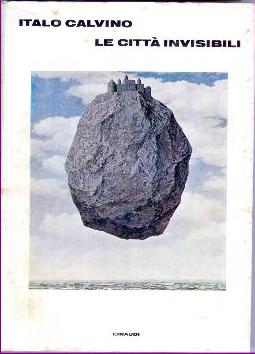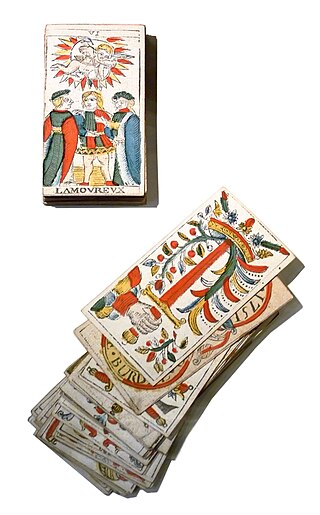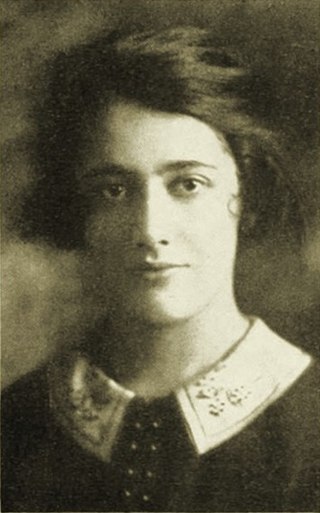The Castle of Crossed Destinies (Italian : Il castello dei destini incrociati) is a 1973 novel by Italian writer Italo Calvino.
The Castle of Crossed Destinies (Italian : Il castello dei destini incrociati) is a 1973 novel by Italian writer Italo Calvino.
The novel is in two parts, each using a different style of tarot deck. The first part was published alone in 1969 as Tarocchi: Il mazzo visconteo di Bergamo e New York (Tarots: The Visconti Pack in Bergamo and New York). It contains allusions to Ludovico Ariosto's Orlando Furioso . [1] The second part, with the header "The Tavern of Crossed Destinies", features the Tarot of Marseilles. [2]
The narrative details a meeting among travelers who are inexplicably unable to speak after passing through a forest. The characters in the novel recount their tales via tarot cards, which are reconstructed by the narrator. The deck scatters at the end of the novel, as do the characters' identities.
The novel is an exploration of how meaning is created, whether that be written via words (by the author, via the book, since the characters in the book cannot speak to each other), or by images (the tarot cards—considered prophetic by some, and themselves open to many symbolic interpretations). [3] It is, as often in Calvino's works, multilayered, and several levels of interpretations and readings are possible, based on the author–narrator–character–reader relationship.

Italo Calvino was an Italian writer and journalist. His best known works include the Our Ancestors trilogy (1952–1959), the Cosmicomics collection of short stories (1965), and the novels Invisible Cities (1972) and If on a winter's night a traveler (1979).

The tarot is a pack of playing cards, used from at least the mid-15th century in various parts of Europe to play card games such as Tarocchini. From their Italian roots, tarot playing cards spread to most of Europe evolving into a family of games that includes German Grosstarok and modern games such as French Tarot and Austrian Königrufen. In the late 18th century, French occultists made elaborate, but unsubstantiated, claims about their history and meaning, leading to the emergence of custom decks for use in divination via tarot card reading and cartomancy. Thus there are two distinct types of tarot pack in circulation today: those used for card games and those used for divination. However, some older patterns, such as the Tarot de Marseille, originally intended for playing card games, are occasionally used for cartomancy.

If on a winter's night a traveler is a 1979 novel by the Italian writer Italo Calvino. The postmodernist narrative, in the form of a frame story, is about the reader trying to read a book called If on a winter's night a traveler. Each chapter is divided into two sections. The first section of each chapter is in second person, and describes the process the reader goes through to attempt to read the next chapter of the book they are reading. The second half is the first part of a new book that the reader ("you") finds. The second half is always about something different from the previous ones. The book was published in an English translation by William Weaver in 1981.

The Magician (I), also known as The Magus or The Juggler, is the first trump or Major Arcana card in most traditional tarot decks. It is used in game playing and divination; in the English-speaking world, the divination meaning is much better known.

Invisible Cities is a novel by Italian writer Italo Calvino. It was published in Italy in 1972 by Giulio Einaudi Editore.

The Hanged Man (XII) is the twelfth Major Arcana card in most traditional tarot decks. It is used in game playing as well as in divination.

The Lovers (VI) is the sixth trump or Major Arcana card in most traditional Tarot decks. It is used in game playing as well as in divination.

Temperance (XIV) is one of the 22 Major Arcana cards in Tarot decks. It is usually numbered 14. It depicts a figure which represents the virtue Temperance. Along with Justice and Strength, it is one of three Virtues which are given their own cards in traditional tarot. It is used in both game playing and in divination.

The Tower (XVI) (most common modern name) is the 16th trump or Major Arcana card in most Italian-suited tarot decks. It has been used in Tarot cards since the 15th century as well as in divination since the mid-19th century.
William Fense Weaver was an English language translator of modern Italian literature.

Timothy Harold Parks is a British novelist, author of nonfiction, translator from Italian to English, and professor of literature.

The Tarot of Marseilles is a standard pattern of Italian-suited tarot pack with 78 cards that was very popular in France in the 17th and 18th centuries for playing tarot card games and is still produced today. It was probably created in Milan before spreading to much of France, Switzerland and Northern Italy. The name is sometimes spelt Tarot of Marseille, but the name recommended by the International Playing-Card Society is Tarot de Marseille, although it accepts the two English names as alternatives. It was the pack which led to the occult use of tarot cards, although today dedicated decks are produced for this purpose.

Page of Swords is a card used in Latin suited playing cards which include tarot decks. It is part of what tarot card readers call the "Minor Arcana"

Bonifacio Bembo, also called Bonfazio Bembo, or simply just Bembo, was a north Italian Renaissance artist born in Brescia in 1420. He was the son of Giovanni Bembo, an active painter during his time. As a painter, Bonifacio mainly worked in Cremona. He was patronized by the Sforza family and was commissioned to paint portraits of Francesco Sforza and his wife Bianca Maria Visconti. Scholars have credited him as the artist who produced a tarot card deck for the Visconti-Sforza families, now held in the Cary Collection of Playing Cards at Yale University. In the past century, art historians have begun to question the authenticity of his works, believing his only two secure works to be the portraits of Francesco and Bianca Maria Sforza. He is believed to have died sometime before 1482.

Susanna Tamaro is an Italian novelist and film director. She is an author of novels, stories, magazine articles, and children's literature. Her novel Va' dove ti porta il cuore was a bestseller, translated into 44 languages, and received the 1994 Premio Donna Citta di Roma.

Tarot card reading is a form of cartomancy whereby practitioners use tarot cards to purportedly gain insight into the past, present or future. They formulate a question, then draw cards to interpret them for this end. A traditional tarot deck consists of 78 cards, which can be split into two groups, the Major Arcana and Minor Arcana. French-suited playing cards can also be used; as can any card system with suits assigned to identifiable elements.

The Fool is one of the 78 cards in a tarot deck. In tarot card reading, it is one of the 22 Major Arcana, sometimes numbered as 0 or XXII. However, in decks designed for playing traditional tarot card games, it is typically unnumbered, as it is not one of the 21 trump cards and instead serves a unique purpose by itself.

Combinatory literature is a type of fiction writing in which the author relies and draws on concepts outside of general writing practices and applies them to the creative process. This method of writing challenges conventional structuralist processes and approaches. To do this, the author investigates alternate disciplines outside the common channels of creative writing and literature, notably mathematics, science and other humanities. The author then applies constraints or influences from the new concepts to their writing process. This inspires creativity in literature regarding form, structure, language and narrative plot, among other things. The emergence of combinatory literature is largely the result of philosophers and intellectuals who have been concerned with the interrelated nature of disciplines and the way these combine to affect brain function. Notable proponents of combinatory literature include T. S. Eliot, Georges Perec and Italo Calvino, whilst modern writers like George Saunders have credited having a multiple disciplinary background as influential on their work.

The hybrid novel is a form of fiction, characterized by reaching beyond the limits of the anticipated medium through the incorporation of varying storytelling methods, such as poetry, photography, collage, maps, diagrams, and posters. The hybrid novel refers to a broad spectrum of literary work such as the graphic narrative and fusion texts.

Gertrude Charlotte Moakley was an American librarian and a Tarot scholar. Moakley is notable for having written the earliest and most significant account of the iconography of Tarot, a card game which originated in the Italian Renaissance. She had worked at the New York Public Library.